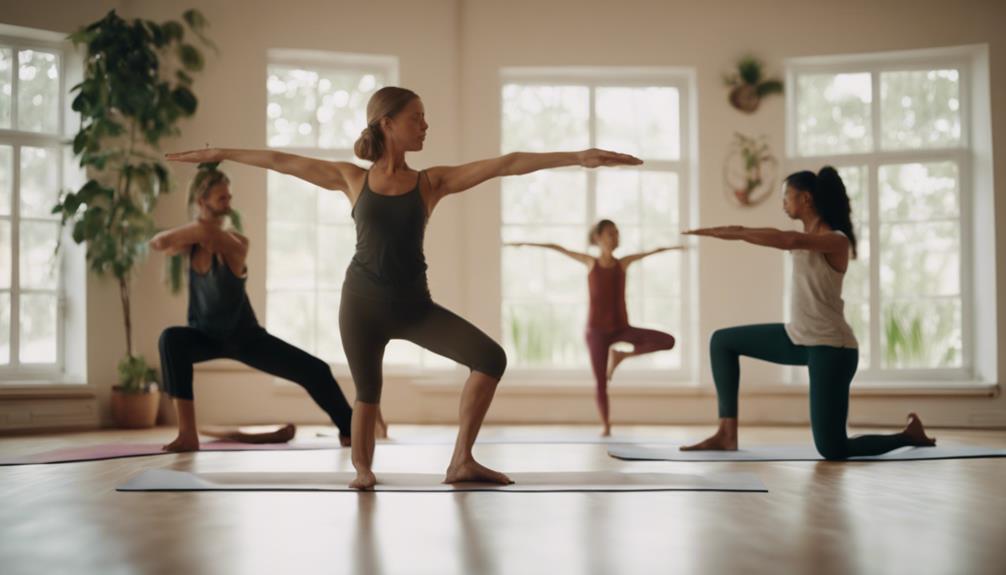What Is Ashtanga Vinyasa Yoga

Ashtanga Vinyasa Yoga is a dynamic and structured form of yoga that has gained immense popularity in the West. Originating in India, this practice combines breath, movement, and meditation to create a holistic experience that nurtures both the body and mind. In this blog post, we will explore what Ashtanga Vinyasa Yoga is, its history, benefits, and how you can incorporate it into your life.
What is Ashtanga Vinyasa Yoga?
Ashtanga Vinyasa Yoga is a style of yoga that emphasizes a specific sequence of postures (asanas) synchronized with the breath (pranayama). The term “Ashtanga” means “eight limbs,” referencing the eightfold path of yoga outlined in the Yoga Sutras of Patanjali. The “Vinyasa” aspect refers to the flow of movement between postures, creating a dynamic and energizing practice. This method typically follows a set series of poses, which practitioners progress through at their own pace, often starting with the Primary Series and advancing to more complex postures.
The Historical Roots of Ashtanga Vinyasa Yoga
Ashtanga Vinyasa Yoga was popularized by Sri K. Pattabhi Jois in the 20th century. He studied under the legendary yoga teacher Krishnamacharya and later developed the modern Ashtanga system. Jois opened the Ashtanga Yoga Research Institute in Mysore, India, where he taught students from around the world. His teachings emphasized the importance of breath, bandhas (energy locks), and drishti (gaze), forming a unique practice that has influenced many contemporary yoga styles. Understanding its roots enhances our appreciation of this powerful practice.
The Eight Limbs of Ashtanga Yoga
Ashtanga Vinyasa Yoga is based on the eight limbs of yoga, which serve as guidelines for ethical and spiritual living. These limbs are:
Related Posts:
1. Yama: Ethical standards and moral values.
2. Niyama: Personal observances and self-discipline.
3. Asana: Physical postures.
4. Pranayama: Breath control.
5. Pratyahara: Withdrawal of the senses.
6. Dharana: Concentration.
7. Dhyana: Meditation.
8. Samadhi: A state of bliss or enlightenment.
By incorporating these eight limbs into the practice, Ashtanga Vinyasa Yoga offers a comprehensive approach to personal development and self-discovery, making it more than just a physical workout.
The Benefits of Practicing Ashtanga Vinyasa Yoga
Practicing Ashtanga Vinyasa Yoga offers numerous physical, mental, and emotional benefits. Physically, it improves flexibility, strength, and stamina, as the dynamic sequences challenge the body in various ways. Mentally, it cultivates focus and concentration, as practitioners must synchronize breath with movement. Emotionally, it fosters a sense of calm and clarity, helping to reduce stress and anxiety. Furthermore, the consistent practice can lead to a deeper understanding of oneself and a greater connection to the present moment.
How to Start Your Ashtanga Vinyasa Yoga Journey
If you’re new to Ashtanga Vinyasa Yoga, the best way to start is by finding a qualified instructor who can guide you through the foundational poses and principles. Many studios offer beginner classes or workshops that introduce the Ashtanga method. It is also beneficial to practice regularly, even if it’s just a few times a week. As you become more familiar with the sequences, you can begin to develop a home practice, using resources such as books, videos, or apps to aid your learning.
Common Misconceptions About Ashtanga Vinyasa Yoga
Ashtanga Vinyasa Yoga is often misunderstood. One common misconception is that it is only for advanced practitioners. While it can be challenging, the practice is accessible to individuals of all fitness levels. Beginners can start with modified variations of poses and gradually progress as their strength and flexibility improve. Another misconception is that Ashtanga must be practiced in a heated environment. While some practitioners prefer a warm studio, it is not a requirement. Ultimately, the key is to listen to your body and practice at your own pace.
Integrating Ashtanga Vinyasa Yoga into Your Daily Routine
Integrating Ashtanga Vinyasa Yoga into your daily routine can enhance your overall well-being. Start by dedicating a specific time each day for practice, whether it’s in the morning to energize your day or in the evening to wind down. Consider keeping a journal to track your progress and reflect on your experiences. Additionally, you can complement your yoga practice with mindfulness techniques such as meditation or breathwork, which can deepen your understanding of the Ashtanga philosophy and enhance your practice.
Conclusion: Embracing the Ashtanga Vinyasa Yoga Lifestyle
In conclusion, Ashtanga Vinyasa Yoga is a transformative practice that offers a pathway to physical health, mental clarity, and spiritual growth. By understanding its origins, principles, and benefits, you can make informed decisions about how to incorporate this practice into your life. Whether you are seeking a rigorous physical workout, a meditative practice, or a holistic approach to well-being, Ashtanga Vinyasa Yoga can meet your needs. Embrace the journey, and discover the profound impact that this ancient practice can have on your life.
By incorporating Ashtanga Vinyasa Yoga into your routine, you not only enhance your physical capabilities but also cultivate a deeper connection to yourself and the world around you. Start your journey today and experience the transformative power of this incredible practice!Can Yoga Reduce StressHow To Do The Crow Yoga Pose